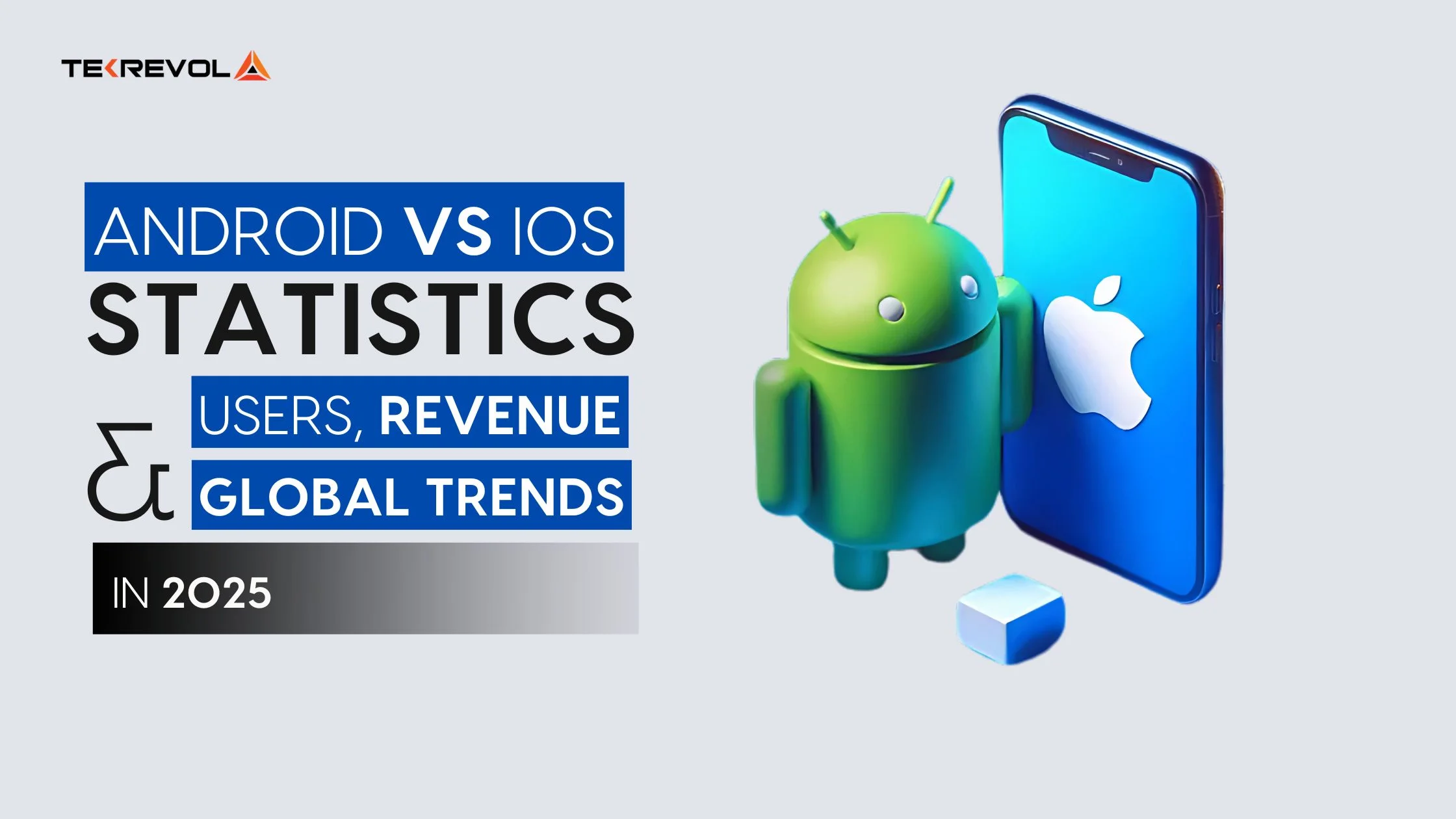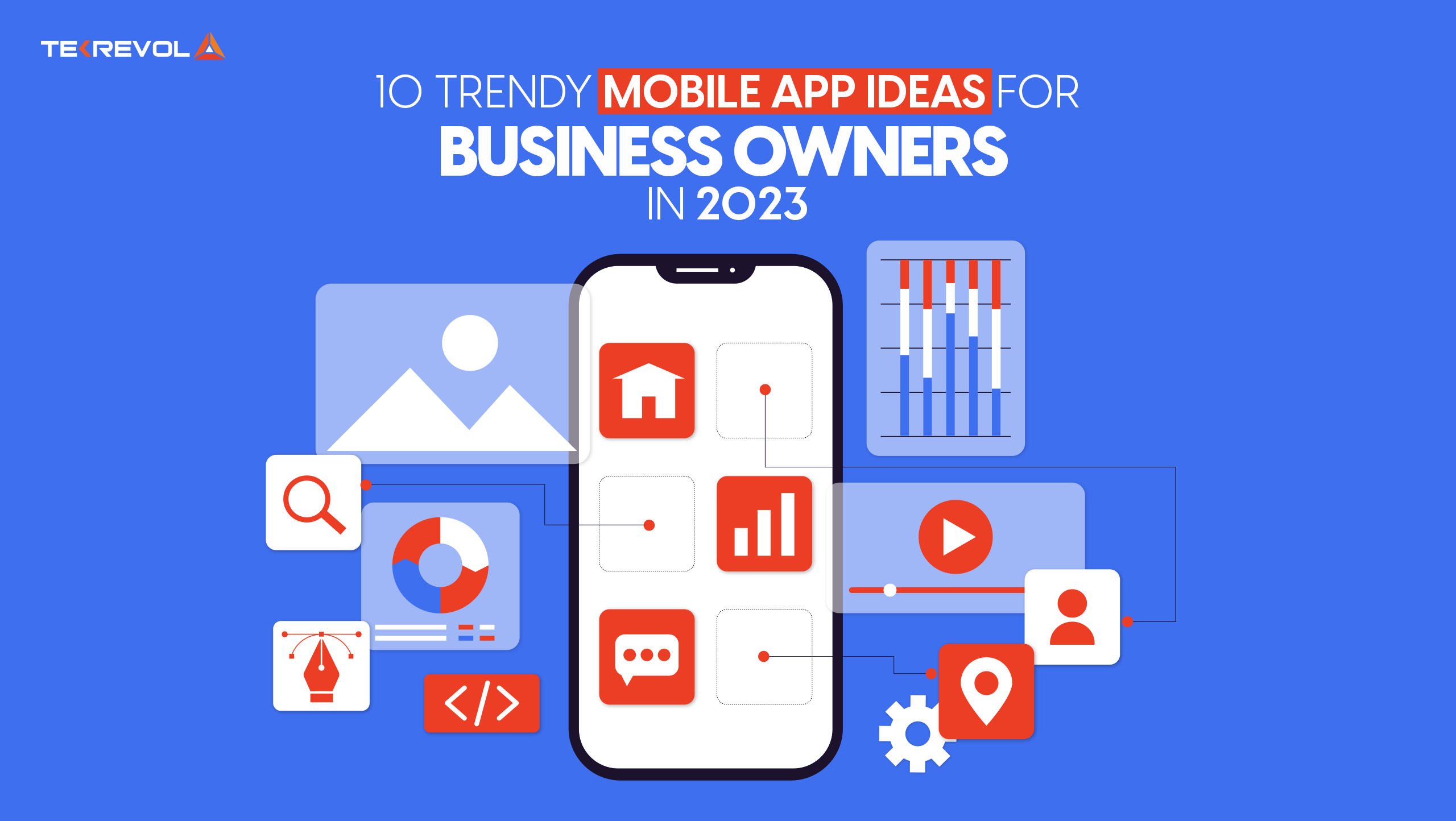Few rivalries in tech spark as much passion as Android vs iOS.
In 2025, Android vs iOS Statistics reveal a fierce battle shaping the smartphone world.
With 4.8 billion smartphones in use globally (3.4 billion Android, 1.4 billion iOS), this showdown matters.
Android’s affordable variety draws budget-conscious users, while iOS’s sleek ecosystem wins fans craving seamless style.
These stats aren’t just numbers, they guide users picking their next phone, developers building apps, and businesses targeting markets.
This blog unpacks iPhone vs Android users, revenue, demographics, and trends.
Whether you’re Team Android or iOS, stick around and you’ll uncover insights that’ll surprise you!
Android vs iOS Stats (2025 Highlights)
- Global Market Share: Android holds a commanding 70.8–72% of the global mobile OS market, while iOS sits at 28–29.2%, with Android’s affordable devices leading in regions like Asia and Africa.
- Revenue Comparison: The App Store generates $85.1 billion (67% of global app revenue), dwarfing Google Play’s $47.9 billion, thanks to iOS users’ higher spending.
- User Base: Android boasts 3.9–4.5 billion active users worldwide, compared to iOS’s 1.46–1.8 billion, reflecting Android’s open-source appeal.
- Key Metrics Shaping Popularity: Android’s cost-effective variety drives global adoption, while iOS’s ecosystem and brand loyalty dominate premium markets like the US (59.21% iPhone market share).
Top 7 Takeaways for 2025
- Android’s global dominance in iOS vs Android market share continues with 70.8–72% worldwide.
- iOS leads in App Revenue Data, capturing 67% of global app spending.
- Regional variations show iOS ruling the US (59.21%) and Japan, while Android dominates Asia and Africa.
- Demographic trends reveal that younger, wealthier users prefer the iPhone, while Android appeals to diverse incomes.
- Emerging technologies like foldable phones boost Android’s innovation edge.
- AI advancements in iOS 18 and Android 15 shape user preferences.
- Privacy concerns influence choices, with iOS’s App Tracking Transparency gaining trust.
- Still confused between Android and iOS for your next mobile app?
Android vs iOS Market Share 2025
In 2025, Android vs iOS Statistics show a global tug-of-war between two tech giants.
Android’s sheer reach powers most smartphones worldwide, while iOS holds strong in wealthier markets with its premium vibe.
From iPhone vs Android market share in the US to regional splits, these numbers reveal how culture, cash, and choice shape the smartphone scene.
Whether you’re wondering what is more popular, iPhone or Android, or how they compare globally, this section breaks it down with eye-opening stats!
Global Market Share: iOS vs Android
Android rules the world with a 70.8–72% market share in 2025, while iOS claims 28–29.2%.
This split has evolved since 2009, when Android’s open-source model started eating into iOS’s early lead.
Android’s affordability and device variety (from budget Xiaomi to premium Samsung) drive its dominance, especially in cost-sensitive regions.
Apple’s iPhone market share, though smaller, thrives on a quality-over-quantity approach, focusing on premium devices and a tight ecosystem.
Fun fact: Android overtook iOS globally in 2012 and hasn’t looked back!
- Historical Trends: Android’s market share grew from 4% in 2009 to 75.47% in 2019, peaking due to its open-source flexibility. iOS, starting at 14% in 2009, stabilized around 25–29% by 2024, driven by loyal users in wealthier markets.
- Key Drivers for Android: Low-cost devices (e.g., $200 Xiaomi vs $800 iPhones), support for multiple brands, and open-source customization.
- Apple’s Strategy: High-end hardware, seamless software (iOS 18), and brand prestige keep iPhone vs Android competitive despite lower volume.
Table 1: Global Mobile OS Market Share (2009–2024)
| Year | Android (%) | iOS (%) |
| 2009 | 4.0 | 14.0 |
| 2012 | 68.3 | 18.8 |
| 2015 | 53.65 | 44.85 |
| 2017 | 70.0 | 28.0 |
| 2019 | 75.47 | 22.85 |
| 2023 | 70.77 | 28.52 |
| 2024 | 71.42 | 27.93 |
Source: StatCounter, 2024
Apple vs Android Market Share in Major Regions
Android’s global lead doesn’t tell the whole story—iPhone vs Android market share varies wildly by region.
In price-sensitive areas like Asia and Africa, Android’s cheap and diverse devices win big.
In contrast, iOS dominates in wealthy regions like North America and Japan, where users value Apple’s polished experience.
These regional splits highlight how income, culture, and availability shape the Apple vs Android market share battle.
- North America: iOS holds 57.55–60%, with the US as a stronghold due to Apple’s brand loyalty and carrier deals.
- Western Europe: Android leads with 68%, but iOS’s 32% shines in countries like the UK.
- Japan: iOS commands 68.86%, driven by cultural affinity for Apple’s sleek design.
- Asia: Android dominates at 80–95%, with India at 95.16% thanks to affordable brands like Xiaomi and Oppo.
- Africa: Android’s 85% share reflects low-cost device availability; iOS is at 13%.
- Latin America: Android has 81.45% in Brazil, fueled by budget options.
- Oceania: iOS leads in Australia with 59.63%, mirroring North American trends.
- Want your app to top the charts? Connect with ASO Experts Today!
Why does Android dominate in Asia and Africa?
Android’s open-source platform allows brands like Xiaomi and Oppo to offer phones as low as $100, compared to iPhones starting at $799. This affordability, paired with diverse hardware, suits budget-conscious markets.
iPhone vs Android Market Share in the US
In the US, iOS leads with a 59.21–60% market share in 2025, while Android holds 40–40.41%. Since 2012, Apple’s share has climbed steadily, overtaking Android in 2022 for the first time.
What percent of Americans have an iPhone?
About 155 million users (59.21% of smartphone users) rock an iPhone, driven by brand loyalty, Apple’s ecosystem (think iMessage and AirPods), and carrier promotions.
Users hype iPhone’s cultural status as a must-have in the US, especially among teens.
- Historical Growth: iOS’s US share grew from 30% in 2012 to 57.68% in 2024, peaking at 61.45% in 2020. Android’s share dropped from 47% in 2012 to 38.13% in 2024.
- Drivers: Apple’s ecosystem locks users in (e.g., Apple Watch only works with iPhones), and carriers offer deals like $0-down iPhones.
- X Sentiment: Posts on X show iPhone as a status symbol in the US, with users praising its camera and social apps like iMessage.
Table 2: US Mobile OS Market Share (2012–2024)
| Year | iOS (%) | Android (%) |
| 2012 | 30.0 | 47.0 |
| 2015 | 50.85 | 46.42 |
| 2017 | 55.0 | 44.0 |
| 2020 | 61.45 | 38.55 |
| 2023 | 56.63 | 43.07 |
| 2024 | 57.68 | 42.06 |
Source: StatCounter, comScore, 2024
State-Level Variations in the US
Even within the US, iPhone vs Android preferences shift by state. Wealthier, urban states lean heavily toward iOS, while Android holds ground in more rural areas.
- California: 66.23% iOS share, boosted by tech hubs like Silicon Valley.
- New York: 72.6% iOS share, driven by urban trendsetters and high incomes.
- Texas: 68.77% iOS share, reflecting a mix of urban wealth and rural Android use.
- Factors: Urbanization (cities favor iOS), income levels (iPhone users earn ~$53,251 vs $37,040 for Android), and marketing (Apple’s ads target young, affluent users).
Why do some US states prefer iOS?
States like New York and California have higher incomes and urban populations, aligning with iPhone’s premium branding. Apple’s marketing also targets trendy, tech-savvy city dwellers.
- Ready to build the next big app with the top app developers?
iPhone vs Android Market Share in Select Countries
Beyond the US, iPhone vs Android market share reflects local vibes.
iOS shines in premium markets like the UK and Japan, while Android’s affordability rules in countries like India and Brazil.
On X, users debate iPhone’s luxury appeal versus Android’s accessible tech.
- United Kingdom: iOS at 52.29%, nearly even with Android, thanks to Apple’s strong retail presence.
- Germany: Android leads with 65%, iOS at 34%, favoring cost-effective brands like Samsung.
- China: Android at 74.76%, iOS at 24.22%, with local brands like Huawei boosting Android.
- India: Android’s 95.16% share dominates due to ultra-cheap devices ($100–$200).
- Brazil: Android at 81.45%, driven by budget phones from Motorola and Xiaomi.
- Local Factors: Pricing (iPhones cost 2–3x more in India), cultural preferences (Japan loves Apple’s design), and availability (Android’s wide vendor network).
- X Insights: Posts highlight iPhone’s status in the UK and Japan, while Android’s value wins in India and Brazil.
Why does Japan love iPhones?
Japan’s tech-savvy culture and high incomes align with Apple’s sleek design and premium branding. iOS’s 68.86% share reflects strong carrier deals and a love for iPhone cameras.
Android vs iOS User Base and Demographics
Ever wondered who’s behind the Android vs iOS battle?
Android vs iOS Statistics for 2025 reveal a world of users split by preference, lifestyle, and location.
Whether you’re picking your next phone, building an app, or targeting customers, these stats unpack iPhone vs Android users from global counts to age, income, and loyalty.
Let’s dig in and see what makes each platform tick!
Android vs iPhone Users Worldwide (2025)
Android powers a staggering 3.9–4.5 billion active users globally, while iOS has 1.56–1.8 billion in 2025.
Android’s open-source edge lets brands like Samsung and Xiaomi offer phones for every wallet, dominating regions like Asia and Africa.
iOS, with a 7% annual user growth, thrives in premium markets like the US and Japan, where Apple’s polished ecosystem shines.
These Android vs iOS Statistics matter for developers targeting global reach (Android) or high-spending users (iOS).
On X, fans debate Android’s budget-friendly variety versus iPhone’s status appeal. The numbers show Android’s scale, but iOS’s loyal base keeps it fierce.
Key Stats to Consider:
- Android’s Advantage: Open-source flexibility fuels a range of devices, from $150 budget phones to $1200 flagships.
- iOS Growth: iPhone’s 7% yearly user increase is driven by upgrades and new buyers in wealthy markets.
- Global Reach: Android’s 71.75% market share vs iOS’s 27.78% reflects its dominance in emerging economies.
- Have an app idea? Maximize revenue with expert iOS app development!
User Base by Device Type
Smartphones lead the charge, but iPhone vs Android users also clash in tablets and wearables.
iOS edges out with 52% of the tablet market, thanks to iPad’s premium apps, while Android holds 47% with affordable options.
In wearables, Apple Watch dominates (60% share), but Android Wear grows with budget-friendly smartwatches from Xiaomi and Fitbit.
Table 3: Device Type Market Share (2025)
| Device Type | iOS Share (%) | Android Share (%) |
| Smartphones | 27.78 | 71.75 |
| Tablets | 52 | 47 |
| Wearables | 60 | 40 |
Source: Statista, Counterpoint Research, 2025
Why It Matters?
Developers targeting tablets should prioritize iOS for creative apps, while Android suits budget-conscious markets. Wearable fans on X love Apple Watch’s seamless sync but praise Android’s price variety.
iPhone vs Android Users in the US
In the US, iPhones rule with 113–155 million users (59.21% of smartphone users), while Android has ~100 million (40.41%).
Younger folks, especially Gen Z, drive iOS’s growth, loving its camera quality and social apps like iMessage. Android holds strong in rural areas where affordability matters.
These stats help businesses target urban iPhone users or diverse Android audiences.
How many Americans use iPhones in 2025?
About 155 million (59.21% of smartphone users), or 47% of adults.
How many Android users are in the US?
Roughly 100 million, making up 40.41% of smartphone users.
Why are iPhones so popular with US teens?
Their social status and FaceTime integration appeal to Gen Z’s connected lifestyle.
What’s driving Android’s US share?
Affordable devices and rural adoption keep Android competitive.
Table 4: US Smartphone Users (2020–2025)
| Year | iOS Users (M) | Android Users (M) | iOS Share (%) | Android Share (%) |
| 2020 | 113.9 | 106.2 | 55.0 | 44.0 |
| 2022 | 118.1 | 130.4 | 50.5 | 49.0 |
| 2024 | 133.4 | 118.1 | 57.68 | 42.06 |
| 2025 | 155.0 | 100.0 | 59.21 | 40.41 |
Source: comScore, Statista, 2025
User Demographics: Age, Gender, Income
Who picks iPhone over Android?
- iPhones lead among 18–34-year-olds (44% vs Android’s 30%), driven by social media clout.
- Women slightly prefer iOS (31% vs 28% men), possibly due to Apple’s design focus.
- iPhone users earn $53,251 on average, compared to Android’s $37,040, and are more likely to have college degrees.
- iOS dominates urban hubs like New York, while Android thrives in rural areas.
These Android vs iOS Statistics guide marketers to target iPhone users for premium products, Android for broad reach.
Table 5: Demographic Splits (2025)
| Demographic | iOS (%) | Android (%) |
| Age 18–34 | 44 | 30 |
| Female | 31 | 54 |
| Male | 28 | 60 |
| Income >$50K | 60 | 40 |
| College Degree | 55 | 45 |
Source: Statista, Designveloper, 2025
Generational Preferences
- Gen Z: iPhones for camera quality (50% prioritize this) and social status on apps like TikTok.
- Millennials: 35% use iPhones, valuing ecosystem sync for work and play.
- Gen X: Android leads (55%), drawn to budget options and customization.
- Boomers: Android’s 60% share reflects familiarity with brands like Samsung.
Why It Matters: Businesses should target Gen Z with iOS-focused social campaigns, Boomers with Android deals.
Regional Demographic Variations
The US sees younger, wealthier iPhone users in cities, driven by brand prestige.
In Asia, Android’s affordability appeals across incomes, especially in India’s budget market. Europe’s balanced demographics show iOS edging out in Denmark, Android in Germany.
In a nutshell, users have summarised that the key factors in this whole discussion are iPhone’s luxury appeal in the US vs Android’s accessibility in Asia.
User Loyalty and Switching Trends
Both platforms lock in users tight.
iOS keeps 85–88%, Android 89–91%. Only 12% of iOS users try Android but return, hooked by Handoff and iMessage.
On the other hand, Android’s customization (think launchers and widgets) keeps fans loyal.
Many iPhone users share emotional ties to Apple’s vibe, while Android fans love tweaking their phones.
At its core, switching between Android and ios happens for price or features, but ecosystems make it tough.
Table 6: Loyalty and Switching Trends (2025)
| Metric | iOS (%) | Android (%) |
| Retention Rate | 85–88 | 89–91 |
| Switch to Other OS | 12 | 11 |
| Return After Switch | 12 | 8 |
Source: Exploding Topics, Wezom, 2025
Why It Matters?
High retention means apps must nail the first experience to keep users.
- Scale globally with professional Android app expertise!
Android vs iOS Device Landscape
Device Variety and Price Range
Android and iOS cater to different vibes in 2025.
Android vs iOS Statistics highlight Android’s vast device spread (from $100 budget phones to $2000 foldables) while iPhones stick to premium territory.
These choices impact everyone, from cost-conscious shoppers to app developers optimizing for diverse hardware.
-
Android
Spans budget ($100–$300, e.g., Xiaomi Redmi A4), mid-range ($300–$600, e.g., Samsung Galaxy A55), and flagship ($600–$2000, e.g., Galaxy Z Fold 7).
Foldables and innovative designs (e.g., Oppo’s rollable screens) push boundaries, appealing to tech enthusiasts. Android’s open-source nature fuels variety across 140+ brands.
-
iPhone
Focuses on premium ($799–$1599, e.g., iPhone 16 Pro Max) with consistent design (notched displays, titanium frames).
Rumored foldables may debut by 2026, but Apple prioritizes polished ecosystems over variety. iOS’s uniformity simplifies app development but limits choice.
-
Market Segmentation
Android dominates budget (85%) and mid-range (70%), iOS leads premium (57%) and ultra-premium (78%).
Budget suits emerging markets, premium thrives in the US, and ultra-premium caters to status-seekers. Businesses target segments based on these splits.
Best-Selling Smartphones on Android vs iOS
In 2025, iPhone vs Android sales show Apple’s premium grip versus Android’s volume power.
iPhones like the iPhone 14 (3.9% global share) and iPhone 16 series lead high-end sales, while Android’s Samsung Galaxy S24, Xiaomi 14, and Oppo Find X7 rule diverse segments.
These Android vs iOS Statistics guide retailers stocking devices and developers prioritizing platforms.
Table 7: Top-Selling iPhones (Q3 2024)
| Model | Global Share (%) | Units Shipped (M) |
| iPhone 14 | 3.9 | 12.6 |
| iPhone 16 | 3.5 | 11.3 |
| iPhone 16 Pro Max | 3.2 | 10.4 |
| iPhone 15 | 2.8 | 9.1 |
Source: Counterpoint Research, 2024
Table 8: Top-Selling Android Smartphones (Q3 2024)
| Model | Brand | Global Share (%) | Units Shipped (M) |
| Galaxy S24 | Samsung | 2.5 | 8.1 |
| Xiaomi 14 | Xiaomi | 2.3 | 7.5 |
| Oppo Find X7 | Oppo | 2.0 | 6.5 |
| Vivo Y28 | Vivo | 1.8 | 5.8 |
Source: Counterpoint Research, 2024
Key Sales Trends:
- iPhone’s Premium Dominance: Apple’s iPhones capture 45% value share despite 19% shipment share, driven by high ASPs ($850+).
- Android’s Volume Power: Android’s 56% sales share comes from mass-market devices ($100–$400), with Xiaomi and Vivo leading growth.
- Emerging Tech Impact: 5G and GenAI features boost Android sales in China and India, while Apple’s Apple Intelligence drives US upgrades.
Why It Matters? iPhone’s high margins attract premium retailers, while Android’s volume suits mass-market strategies.
Sales by Market Segment
The 2025 smartphone market splits into budget, premium, and ultra-premium, with Android vs iOS Statistics showing clear leaders.
iOS owns 57% of premium ($400+) and 78% of ultra-premium ($1000+), thanks to iPhone’s brand prestige. Android’s 85% budget share reflects its low-cost variety.
These splits guide manufacturers: Apple focuses on high-end, Android on scale.
Table 9: Sales by Market Segment (2025)
| Segment | Price Range | iOS Share (%) | Android Share (%) |
| Budget | $100–$400 | 15 | 85 |
| Premium | $400–$1000 | 57 | 43 |
| Ultra-Premium | $1000+ | 78 | 22 |
Source: IDC, 2025
Why It Matters: Developers prioritize iOS for high-spending premium users, Android for budget reach.
Sales in Select Countries
- In 2025, iPhone vs Android sales vary by country, reflecting local preferences and economies.
- China sees 41 million iPhones sold in Q2 2023, but Android’s Huawei and Vivo lead with 60% share.
- The US moves 25 million iPhones in Q2 2023, with iOS at 59%.
- India’s festive season powers Android’s 95% share, driven by Xiaomi and Vivo.
These Android vs iOS Statistics help businesses tailor regional strategies.
Table 10: Smartphone Sales in Select Countries (Q2 2023)
| Country | iOS Sales (M) | Android Sales (M) | iOS Share (%) | Android Share (%) |
| China | 41 | 61.5 | 40 | 60 |
| US | 25 | 17.3 | 59 | 41 |
| India | 3 | 57 | 5 | 95 |
Source: Canalys, IDC, 2023
App Ecosystem: App Revenue, Downloads, and Availability
App Data Report 2025: Number of Apps on iOS vs Android
In 2025, Google Play hosts 2.44 million apps, outpacing the App Store’s 1.9 million.
Both platforms grow fast, adding ~1.2K new apps daily, driven by demand for AI, gaming, and productivity tools.
Google Play’s 49 categories (from comics to auto) offer more variety than the App Store’s 26, which focuses on streamlined options like navigation and health.
These Android vs iOS Statistics matter for developers: Android’s open market suits niche apps, while iOS’s curated store draws premium creators.
Table 11: App Store vs Google Play App Counts (2025)
| Platform | Apps (M) | Daily New Apps | Categories |
| App Store | 1.9 | ~1.2K | 26 |
| Google Play | 2.44 | ~1.2K | 49 |
Source: Statista, 42matters, 2025
App Revenue Data: iOS vs Android
Global app revenue hit $150.1 billion in 2024, with iOS claiming 68% (~$102 billion) and Android 32% (~$48 billion).
iOS users spend $10.4 monthly on apps, dwarfing Android’s $1.4, due to wealthier users in markets like the US and Japan.
By 2026, projections show the App Store at $161 billion and Google Play at $72 billion.
These Android vs iOS Statistics guide developers: iOS for premium apps, Android for ad-driven models.
Revenue Breakdown:
- iOS Dominance: App Store’s 68% share ties to high per-app spending ($12.77 vs Android’s $6.19).
- Android Scale: Google Play’s lower revenue reflects its 97.7% free apps vs iOS’s 95.2%.
- Projections: App revenue could reach $233 billion by 2026, with iOS leading due to subscriptions.
- Your app idea needs expert professional guidance!
In-App Purchases and Subscriptions
In-app purchases and subscriptions drive revenue, with iOS leading non-gaming apps like TikTok ($208M on iOS) and Android favoring Google One ($33M).
iOS’s subscription model thrives in streaming and productivity, while Android leans on freemium gaming.
Table 12: Top-Grossing Apps by Revenue (June 2023)
| iOS App | Revenue ($M) | Android App | Revenue ($M) |
| DouYin | 372.8 | Disney+ | 70.59 |
| TikTok | 324.4 | Max | 50.73 |
| Picoma | 228.32 | TikTok | 38.09 |
| Honor of Kings | 165.75 | Google One | 27.34 |
| Tencent Video | 165.71 | Peacock TV | 25.2 |
Source: Statista, 2023
Trend: iOS’s subscription growth (73% of $66.8B in 2024) outpaces Android, driven by apps like Netflix and Spotify.
App Downloads: Android vs iOS
Android captures 70% of global app downloads (~110 billion in 2024), thanks to its 4.5 billion user base, while iOS’s 36 billion downloads reflect higher per-user engagement (15 apps/year vs Android’s 10).
Android’s 97.7% free apps dominate emerging markets like India, while iOS’s premium focus boosts paid downloads in the US.
These Android vs iOS Statistics help developers target high-download regions (Android) or engaged users (iOS). On X, Android users celebrate free app abundance, iOS fans love curated picks.
Table 13: Most-Used Apps Worldwide (2024)
| App | Downloads (M) | Platform Strength |
| TikTok | 850 | iOS (revenue), Android (downloads) |
| 600 | Android (global reach) | |
| 500 | iOS (US, Europe) | |
| 450 | Android (emerging markets) |
Source: Sensor Tower, 2024
Key Trends: Android’s download lead ties to its user base; iOS’s per-user downloads reflect wealthier markets.
App Spending and Monetization
iOS users outspend Android users ($10.4 vs $1.4 monthly), driving developer focus on premium iOS app development.
Android leans on ad-based revenue (98% of free app earnings), while iOS excels in subscriptions (73% of $66.8B in 2024).
Conversion rates are close (30% for iOS, 30.5% for Android), but iOS’s navigation apps (104.5% CVR) outperform Android’s events (84.1%).
Monetization Insights:
- Subscriptions: iOS’s 73% share of $66.8B in 2024 reflects streaming and productivity apps.
- Ads: Android’s freemium model generates 98% of free app revenue globally.
- One-Time Purchases: iOS’s $12.77 per app vs Android’s $6.19 shows higher user willingness to pay.
- Developer Choice: iOS for high revenue per user, Android for mass reach via ads.
App Quality and Approval
iOS’s strict guidelines ensure fewer buggy apps but slow approvals, while Android’s fast approvals allow more variety, sometimes at quality’s expense.
Android apps score higher on average (4.2/5 vs iOS’s 4.0/5), reflecting user tolerance for diversity.
Retention rates favor iOS, with 23.9% day-1 retention vs Android’s 21.1%, boosting in-app purchase odds.
These stats help users pick reliable apps and developers plan launches.
Table 14: App Retention Rates (2025)
| Timeframe | iPhone Retention (%) | Android Retention (%) |
| Day 1 | 23.9 | 21.1 |
| Day 3 | 12.3 | 9.4 |
| Day 7 | 8.3 | 5.6 |
| Day 14 | 5.7 | 3.5 |
| Day 21 | 3.7 | 2.1 |
Source: AppsFlyer, 2025
- The best time to optimize your app for success is now!
Android vs iOS: Impact on Developers and Businesses
Building apps or marketing in 2025? Android vs iOS Statistics are your roadmap.
Android’s massive reach clashes with iOS’s premium profits, shaping how developers code and businesses advertise.
Whether you’re a coder picking tools, a startup chasing revenue, or a marketer targeting users, this section unpacks iPhone vs Android impacts with real-world insights.
Buckle up as these stats will guide your next move!
App Development Considerations
Developers face a big choice: iOS or Android?
iOS’s strict guidelines mean higher development costs ($30K–$50K for a basic app) due to Apple’s rigorous testing, but the payoff is a polished app with higher ROI ($12.77 per app vs Android’s $6.19).
Android’s fragmentation (thousands of devices and OS versions) lowers costs ($20K–$40K) but demands more testing.
Tools like Xcode (iOS) offer a sleek coding experience, while Android Studio supports diverse hardware.
Cross-platform solutions like Flutter and React Native save time, cutting costs by 30%. These Android vs iOS Statistics help developers balance budget and audience.
Table 15: Development Costs and Tools (2025)
| Platform | Avg. Cost (Basic App) | Primary Tool | Cross-Platform Options |
| iOS | $30K–$50K | Xcode | Flutter, React Native |
| Android | $20K–$40K | Android Studio | Flutter, React Native |
Source: Business of Apps, Appmysite, 2025
For developers, iOS suits premium apps with high revenue potential, while Android’s reach targets diverse markets.
Flutter’s rise (used by 42% of developers) shows cross-platform coding is a game-changer, especially for startups on tight budgets.
Advertising and Marketing Trends
- Advertising in 2025 leans heavily on mobile, with iOS capturing 60% of $330 billion in global ad spend, despite Android’s larger user base.
- iOS users, with higher incomes ($53,251 vs $37,040), engage more with premium ads (e.g., in-app video), driving 2x click-through rates (3.2% vs 1.6% for Android).
- Android’s strength lies in scale, with 70% of ad impressions in emerging markets like India.
- Marketers share iPhone vs Android ad strategies: iOS for luxury brands, Android for mass-market campaigns.
These Android vs iOS Statistics guide businesses to maximize ad budgets.
Table 16: Mobile Ad Spend and Engagement (2025)
| Platform | Ad Spend Share (%) | Click-Through Rate (%) | Avg. Cost per Click ($) |
| iOS | 60 | 3.2 | 1.20 |
| Android | 40 | 1.6 | 0.80 |
Source: Statista, Apptweak, 2025
Marketers note iOS’s privacy rules (App Tracking Transparency) limit ad tracking but boost trust, while Android’s openness allows broader targeting.
Choosing the Best Platform
Picking between iOS and Android depends on goals.
- iOS shines for premium apps and subscriptions, with users spending $10.4 monthly (vs Android’s $1.4). Think Netflix or Adobe—high revenue, loyal users.
- Android excels for free apps and ad-based models, leveraging its 4.5 billion users for scale. Apps like TikTok thrive here, with 70% of downloads.
- Hybrid strategies using Flutter or React Native hit both platforms, maximizing reach and revenue.
At the end, this choice shapes app success; iOS for revenue, Android for reach, or both for balance.
- Are you ready to capture Android’s market with expert app development?
Android vs iOS: Global Trends and Future Outlook
Emerging Markets and Growth Opportunities
Android and iOS are carving distinct paths in 2025.
Android’s mass-market appeal rules emerging regions, while iOS bets big on premium pockets.
New tech like foldables, AI, and 5G, plus China’s HarmonyOS, stirs the pot.
These Android vs iOS Statistics guide strategies for tapping growth. Here are some of the expected trends moving forward:
-
Android’s Dominance
Holds 92–95% in India, Brazil, and Africa, driven by affordable devices ($100–$300) from Xiaomi and Vivo. Asia-Pacific’s urbanization fuels 70% of global Android sales.
-
iOS’s Premium Growth
iOS grows in the US (59% share), Japan (55%), and Western Europe, with iPhone 16e and Apple Intelligence sparking upgrades. Affordable SE models boost emerging market share.
-
AI Integration
iOS 18’s neural network Siri competes with Android’s Gemini-powered Google Assistant. Both enhance photography and personalization, but Android’s open AI ecosystem draws developers.
-
5G Adoption
South Korea’s 432.5 Mbps 5G speeds drive demand for 5G phones (45% of 5.3B devices). Android’s low-cost 5G options thrive in Asia; iOS leads in North America.
-
HarmonyOS
Huawei’s HarmonyOS hits 19% in China, challenging Android (56%) and iOS (23%). Its IoT integration eyes global growth, but US sanctions limit reach.
In a nutshell, Android’s scale wins emerging markets, while iOS’s premium focus and Apple’s ecosystem drive high-value regions. HarmonyOS adds a wildcard in China.
Technological Innovations to Watch
The tech race in 2025 is red-hot, with AI, AR/VR, and security reshaping iPhone vs Android.
Android vs iOS Statistics reveal both platforms pushing boundaries, but the EU’s Digital Markets Act (DMA) shakes up app stores, and HarmonyOS emerges as a contender.
Following are the most anticipated innovations that will impact the user experience and developer choices.
- AI/ML: iOS 18’s Siri leverages Apple Intelligence for contextual replies, while Google Assistant’s Gemini integration excels in multilingual tasks. Both drive 21% of buyers to prioritize AI features.
- AR/VR: Apple Vision Pro’s spatial computing sets a high bar, but Android’s ARCore powers budget-friendly AR apps. Vision Pro targets pros; ARCore suits mass-market gaming.
- Security and EU DMA: The EU’s DMA forces iOS to allow sideloading and third-party app stores, leveling the playing field with Android’s open ecosystem. Privacy remains iOS’s edge.
- HarmonyOS: With 19% share in China, HarmonyOS’s microkernel and IoT focus challenge Android’s dominance. Global expansion hinges on app ecosystem growth.
Table 17: Key Technological Innovations (2025)
| Innovation | iOS Strength | Android Strength | Market Impact |
| AI/ML | Siri’s neural network | Gemini-powered Assistant | 21% buyer preference |
| AR/VR | Vision Pro’s spatial computing | ARCore’s accessibility | AR grows 15% YoY |
| Security/DMA | Privacy-first, sideloading | Open ecosystem | EU app store shift |
| HarmonyOS | Limited presence | 19% in China | Challenges duopoly |
Source: Counterpoint Research, Kantar, 2025
- Ready to make your app go viral on the app stores?
- Claim a Free Success Consultation







![What is Visual Regression Testing [2025 Definitive Guide]](https://d3r5yd0374231.cloudfront.net/images-tek/uploads/2025/11/Feature-19.jpg)


